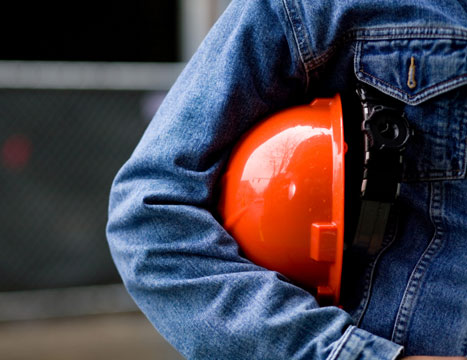
Frequently Asked Questions – and Tricon Precast Answers
Precast concrete products and systems are used extensively in infrastructure and civil structures and are intensively studied by industry and academia. These FAQs have been adapted from trade associations' materials* as well as from our own experience.
Q. Where is Tricon Precast headquartered?
A. Tricon Precast is headquartered
in Houston, TX.
Q. What is the chief advantage of a Tricon Precast solution?
A. When it comes to retaining wall applications, Tricon has
a stable of uniquely different systems to choose from and the engineering expertise
in each to properly apply them. Proven systems, each designed for maximum site specific
efficiency. Our systems, products, and engineering expertise bring the infrastructure
owner, designer and builder a broad range of value-added
solutions.
As for short to medium span, off system road bridges, few precasters can offer the range of unique systems and engineering design support that Tricon Precast can. Tricon bridge systems are among the most durable, cost efficient, innovative, and aesthetically pleasing structures you will find.
Q. What are the advantages of precast concrete retaining walls over other materials
and construction methods?
A. The advantages of precast concrete retaining walls include:
- Engineering. Precast concrete walls are generally supported by engineering specific to both the particular wall system and to the project site conditions. This is not always the case with walls built from natural stone materials (i.e., boulders).
- Durability. Precast concrete walls are usually made from wet-cast, air-entrained concrete that is very durable. Resistance to the adverse effects of repeated freeze-thaw cycles and road salts can be significant. Tricon Precast will work with you to determine and verify the mix design used (including the strength of the concrete).
- Aesthetics. Many precast concrete wall systems are made with an architectural finish that replicates natural stone. In addition, precast concrete walls can be painted or stained with a number of commercially available products to further enhance and customize the look. The use of integrally colored concrete is another option.
- Ease of Construction. Most precast wall systems today are designed for easy installation requiring minimal on-site work. Selecting a "No Tool" system will further simplify the erection process.
Q. What is the Tricon Precast Retained Soil Wall System™?
A. This is a patented Mechanically
Stabilized Earth (MSE) system that Tricon Precast has been producing for
more than 20 years. It also features a patented connection system, which streamlines
a contractor's installation process and offers major benefits when compared to other
MSE systems and especially cast-in-place wall systems. The engineered Tricon Precast
system design translates to simple and efficient installation that requires no tools.
The system is designed to facilitate the long-term settlement and short-term adjustments
that occur during installation. The availability of various wall finishes provided
by custom form liners offers even more design flexibility for specific project needs.
Q. What should a civil engineer, architect, general contractor or developer
know about retaining walls and precast concrete wall systems in particular?
A. The quality of a retaining wall will be equal to the strength
of the weakest link in the retaining wall chain. That chain includes your upfront
planning and design, the inherent design integrity of the retaining wall system
chosen, the accuracy of the site specific geotechnical information, the thoroughness
of the site-specific wall system engineering, the quality of the plant produced
system components, and to a very large extent, the quality of the on-site wall construction.
Retaining walls are frequently structural in nature and often critical to the proper development of a site. A first step in the proper planning for a retaining wall is to collect information about the soils at the location. Soil borings and follow-up shear testing of the soils are important and perhaps critical. In addition, the expense incurred to gather this information will generally pay dividends in the long run. Without the proper soils information, wall construction will be delayed until the information is collected, or worst-case assumptions may be made.
Your choice of a proven system provider with in-house engineering expertise and a solid track record will go a long way in guiding you through the process from conception to completion.
Q. Does Tricon Precast have its own internal quality assurance program?
A. Yes. This is very important in determining the quality of the
precast concrete product that you will select for your project. As a leading precast
concrete company, we have a quality assurance
program in place, to ensure that we continue measuring up to our own "quality
factor."
Q. What methodologies are used to design retaining walls?
A. The American Association of State Highway Transportation Officials
(AASHTO) uses the FHWA Publication Number FHWA-SA 96-071 Mechanically Stabilized
Earth Walls and Reinforced Soil Slopes Design and Construction Guidelines (known
as Demo 82) dated October 1996. AASHTO is generally used for public and government
projects. It calls for reinforcement depths equal to the greater of two figures,
either 70% of the wall height or eight feet. It requires uniform reinforcement depths,
requires imported sand or gravel in the reinforced zone, and calls for a minimum
embedment depth of two feet. Other design
methodologies may be available depending on the system used.
Q. What is Load and Resistance Factor Design (LRFD)?
A. A 1987 Transportation Research Board study concluded that AASHTO
Standard Specifications for Highway Bridges contained gaps and inconsistencies and
didn't use the latest design philosophy and knowledge. As a result, AASHTO first
adopted the Load and Resistance Factor Design (LRFD) Bridge Design Specification
in 1994 and the Guide Manual for Condition Evaluation and Load and Resistance Factor
Rating (LRFR) of Highway Bridges in 2002 – all for a more uniform level
of safety and reliability for highway structures.
With LRFD, a bridge designer focuses on a design objective or limit state, which can lead to a similar probability of failure in each component. Pre-stressed, precast bridges like those made available by Tricon Precast, designed with LRFD specifications, should have more uniform safety levels which will lead to superior serviceability and long-term maintainability.
Because of LRFD's impact on the safety, reliability, and serviceability of American's bridge inventory, AASHTO, in concurrence with the Federal Highway Administration (FHWA), set a transition deadline of October 1, 2007, after which states must design all new bridges according to these LRFD specifications.
Q. What are LEED products? Why are they increasingly important?
A. Leadership in Energy and Environmental Design (LEED) Green Building
Rating systems were developed by the US Green Building Council (USGBC) to help construction
markets transform their practices into to more stable, efficient, and environmentally
sound approaches for design and construction. Also, the Texas Department of Transportation
(TxDOT) supports the Greenroads sustainability program (http://www.greenroads.us/files/27.pdf) which promotes the
application of LEED standards to road construction.
LEED products are voluntary, consensus-based systems used as standards for certification and design guides for sustainable construction and operation. Tricon Precast supports the growth of environmentally sensitive, energy-efficient precast concrete products because they offer minimal on-the-job site disruption; reduce damage to drainage paths and natural habitats; do not off-gas, or need to be sealed or painted; and are generally made from materials that are extracted and manufactured regionally, reducing transportation costs.








